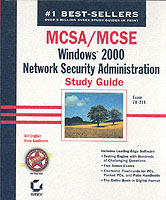- ホーム
- > 洋書
- > 英文書
- > Business / Economics
基本説明
Written for managers, administrators in government, and nonprofit institutions, it explores the many methods of evaluation to improve program performance. Contents - Part One: Evaluation Planning and Design. Part Two: Practical Data Collection Procedures. Part Three: Data Analysis. Part Four: Use of Evaluation.
Full Description
The book is designed to enable students of public policy, policymakers and mangers to obtain useful information and conduct successful systematic evaluations, even under tight resource constraints. This text presents a wide variety of approaches to evaluation through brief, authoritative articles by top academics and practitioners. Thoroughly revised and updated this third edition is filled with the most current information, up-to-date examples, and puts increased emphasis on practical applicability. The third edition also features a new and up-dated instructor s manual.
Contents
Figures, Tables, and Exhibits xi
Preface xv
The Editors xxiii
The Contributors xxvii
Part One: Evaluation Planning and Design 1
1 Planning and Designing Useful Evaluations 5 Kathryn E. Newcomer, Harry P. Hatry, Joseph S. Wholey
2 Analyzing and Engaging Stakeholders 30 John M. Bryson, Michael Q. Patton
3. Using Logic Models 55 John A. McLaughlin, Gretchen B. Jordan
4. Exploratory Evaluation 81 Joseph S. Wholey
5. Performance Measurement: Monitoring Program Outcomes 100 Theodore H. Poister
6. Comparison Group Designs 125 Gary T. Henry
7. Randomized Controlled Trials and Nonrandomized Designs 144 Carole J. Torgerson, David J. Torgerson, Celia A. Taylor
8. Conducting Case Studies 163 Karin Martinson, Carolyn O Brien
9. Recruitment and Retention of Study Participants 182 Scott C Cook, Shara Godiwalla, Keeshawna S. Brooks, Christopher V. Powers, Priya John
10. Designing, Managing, and Analyzing Multisite Evaluations 208 Debra J. Rog
Part Two: Practical Data Collection Procedures 237
11. Using Agency Records 243 Harry P. Hatry
12. Using Surveys 262 Kathryn E. Newcomer, Timothy Triplett
13. Using Trained Observer Ratings 298 Barbara J. Cohn Berman, Julie Brenman, Verna Vasquez
14. Collecting Data in the Field 321 Demetra Smith Nightingale, Shelli B. Rossman
15. Using the Internet 347 William C. Adams
16. Conducting Semi-Structured Interviews 365 William C. Adams
17. Focus Group Interviewing 378 Richard A. Krueger, Mary Anne Casey
18. Using Stories in Evaluation 404 Richard A. Krueger
Part Three: Data Analysis 425
19. Qualitative Data Analysis 429 Patricia J. Rogers, Delwyn Goodrick
20. Using Statistics in Evaluation 454 Kathryn E. Newcomer, Dylan Conger
21. Cost-Effectiveness and Cost-Benefit Analysis 493 Stephanie Riegg Cellini, James Edwin Kee
22. Meta-Analyses, Systematic Reviews, and Evaluation Syntheses 531 Robert F. Boruch, Anthony Petrosino
Part Four: Use of Evaluation 555
23. Pitfalls in Evaluations 557 Harry P. Hatry, Kathryn E. Newcomer
24. Providing Recommendations, Suggestions, and Options for Improvement 581 George F. Grob
25. Writing for Impact 594 George F. Grob
26. Contracting for Evaluation Products and Services 620 James B. Bell
27. Use of Evaluation in Government: The Politics of Evaluation 651 Joseph S. Wholey
28. Evaluation Challenges, Issues, and Trends 668 Harry P. Hatry, Joseph S. Wholey, Kathryn E. Newcomer
Name Index 681
Subject Index 685








